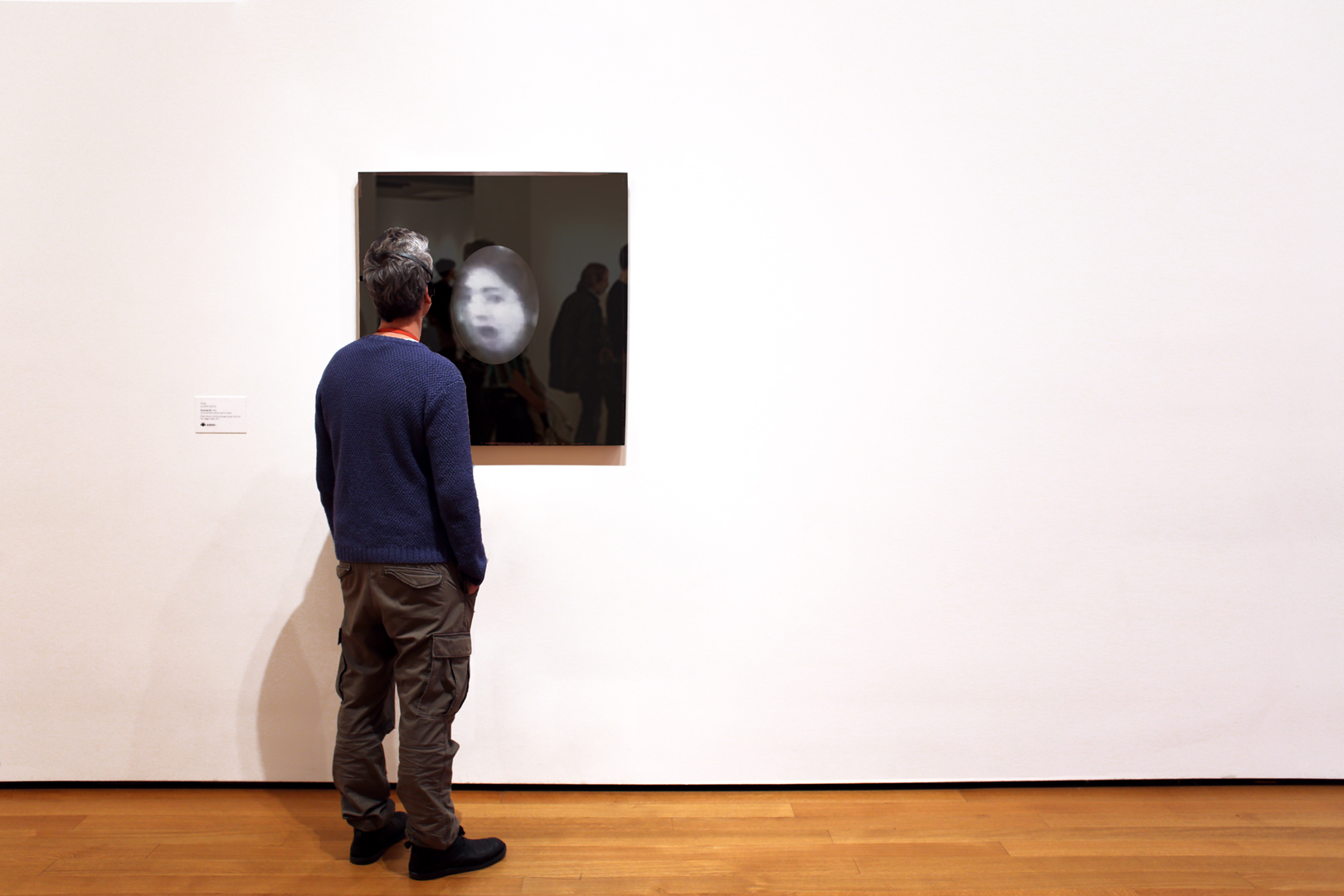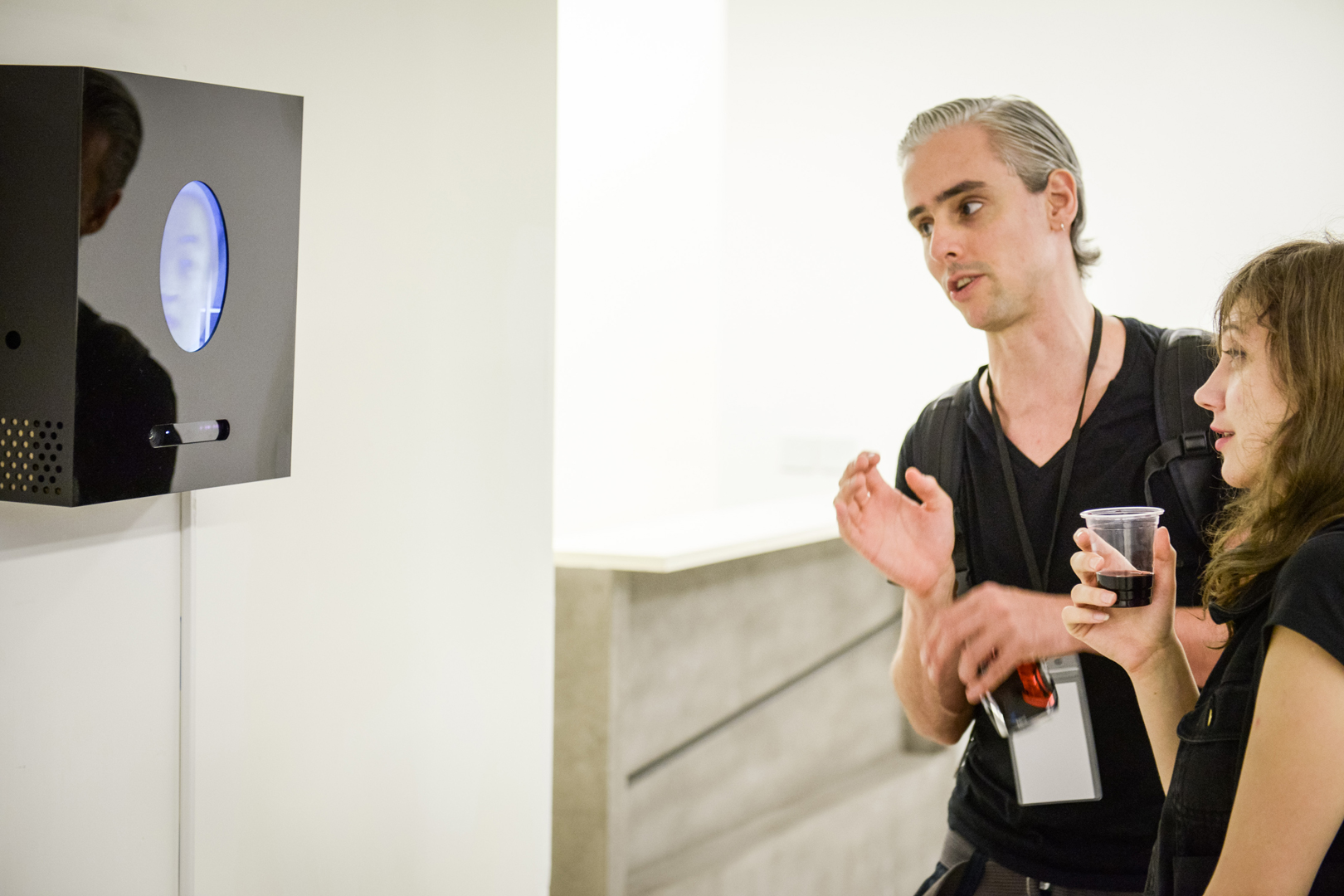“Walrus” by Tomás Laurenzo Coronel
Title:
Artist(s) and People Involved:
Exhibiting Artist(s):
Symposium:
Venue(s):
Creation Year:
Medium:
Artist Statement:
“I am he as you are he as you are me and we are all together.”
— John Lennon, lyrics in The Beatles song “I am the Walrus”, 1967.
Walrus (2011 – 2016) is an interactive installation consisting of an augmented mirror that only reflects the face of its users, while supplanting the interactor’s face with a previously recorded one in the same position and with a similar facial expression. This supplantation occurs in every frame, using a different person’s face each time.
Walrus proposes a reflection on identity and self-perception, while also commenting on the current conversations on interaction, technology, and surveillance. Mirrors have always played an important role in culture. With a history dating back 8000 years, not only they have always been present in art and in myths, but they can also be thought of as the first interactive artworks. Mirrors have always been very popular in new media art, and new technologies are always used to create new kinds of mirrors.
With Walrus I attempt at leveraging this “design pattern” by creating a mirror that proposes a self-contradicting interaction: a mirror that infers a human essence, a common trait of all people (amalgamating all its users into a continuous stream of visual feedback), while at the same time maintaining its most basic behaviour. Mirrors, in Borges words, trouble the depths. They exist in the reflection of light, outside of the image, simultaneously expanding a scene and constituting its border, its limit. Mirrors are interactive, yet blind; however, Walrus’s manipulation of the image proposes a mirror that partially sees us, understands us, and explicitly constructs a representation of us. An idea of us.
The installation also inserts the dynamics of computational ubiquity and surveillance in which our identity is partially defined by the objectification of being “the surveilled”. It is in this reflection where the installation proposes a dialogue. In Flusser words, “the task of a philosophy of photography is to reflect upon this possibility of—and thus its significance—in a world dominated by apparatuses”
Technical Information:
“Walrus” uses a Microsoft Kinect Sensor, a computer, a screen and an oval-shaped picture frame. It uses the sensor to track the interactor’s head, and Microsoft’s Face Tracker to locate the face and extract some gestural features: mouth shape, eyebrows position, eyes opening, etc.
The computer stores each new face and its associated data into a database, and returns an existing one from the database. The database is organised as a hash table, with similar faces stored under the same hash entries. Face similarity is defined by an L∞ norm of the head rotation, plus similar gestural features.
When a new face is entered, it is put into the entry of the hash entry with most similar poses. To avoid running out of storage, there is a fixed maximum size of each hash entry, and an existing element is randomly deleted when the limit is reached. This can be considered as a cheap way of finding similar faces to the input through hashing.
Other Information:
Walrus’s first version was created at Microsoft Research by Tomas Laurenzo and and Li-Yi Wei. This work continued also at Microsoft Research in 2012 by Tomas Laurenzo and Qin Cai.






